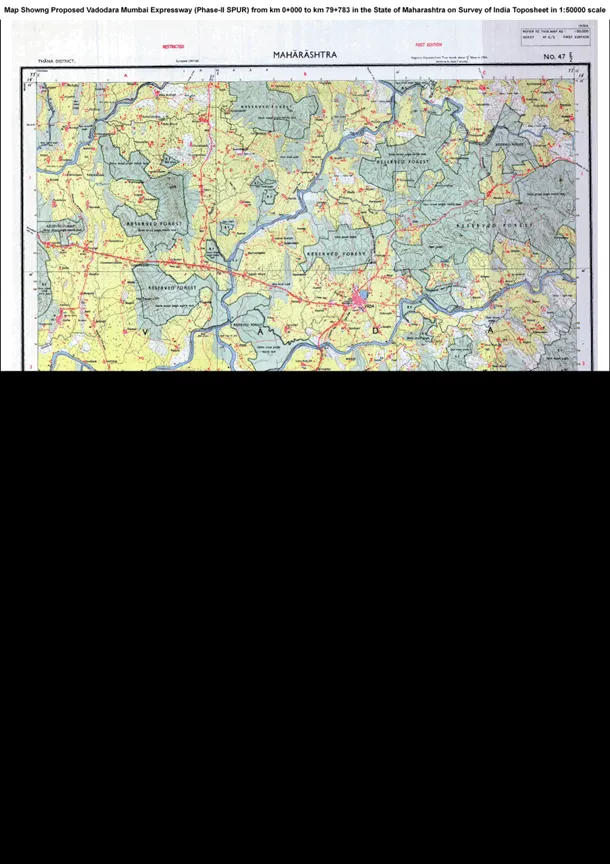Vadodara to Mumbai Train: A Comprehensive Guide to the Delhi Mumbai Expressway Route
The Vadodara-Mumbai Expressway is an ambitious infrastructure project that promises to revolutionize travel between two of India’s major commercial hubs. This under-construction expressway is part of the larger Delhi-Mumbai Expressway, which aims to connect the national capital with the financial capital of India. Let’s dive into the details of this transformative project.
Overview of the Vadodara-Mumbai Expressway
The Vadodara-Mumbai Expressway is a 379-kilometer-long, eight-lane, access-controlled expressway. It is designed to significantly reduce travel time and improve connectivity between Vadodara and Mumbai. The project, which began on March 8, 2019, is expected to cost around Rs 1 Lakh Crore, including land acquisition.
Key Features
- Length: 379 km
- Lanes: Six lanes, expandable to eight
- Owner: National Highways Authority of India (NHAI)
- Construction Model: Hybrid Annuity Model
- States Covered: Gujarat and Maharashtra
- Cities Covered: Vadodara, Bharuch, Surat, Navsari, Valsad, Daman, Manor, Thane, Mumbai
Delhi Mumbai Expressway Route
The Vadodara-Mumbai Expressway is a crucial segment of the Delhi-Mumbai Expressway, which spans multiple states and cities. This expressway is part of the Bharatmala Pariyojana project, aimed at improving road infrastructure across India.
Route Details
- Speed Limit: 120 kmph
- Service Roads: 48 km at various locations
- Boundary Walls: Installed to prevent wildlife and domestic animals from entering
- Toll Plazas: 34 in total, with two main toll plazas
- Right of Way (ROW): 100m/120m
- Median Width: 12m for eight-lane sections, 19.5m for six-lane sections

Proposed Structures
The expressway will feature various structures to ensure smooth and efficient travel:
- Flyovers: 24
- Interchanges: 14
- Vehicular Underpasses: 76
- Major Bridges: 29
- Minor Bridges: 88
- Railway Over Bridges: 8
- Pedestrian Underpasses: 129
- Cattle Underpasses: 232
- Culverts for Cross Drainage: 447
- Culverts for Irrigation/Utility: 391
- Wayside Amenities: 26
- Truck Parking: 8
- Emergency Crossovers: Every 5 km
Cost and Construction Model
The Vadodara-Mumbai Expressway will be developed using the Hybrid Annuity Model (HAM), which combines the Engineering, Procurement, and Construction (EPC) model with the Build-Operate-Transfer (BOT) model. The government will cover 40% of the cost, while contractors will arrange the remaining 60%.
Phases of Construction
The expressway is divided into two main sections, each comprising multiple packages:
Section 1: Vadodara-Virar (354 km)
- Packages: 13
- Contractors: VK1 Expressway, IRCON Vadodara-Kim Expressway, Patel Vadodara-Kim Expressway, Ashoka Ankleshwar Manubar Expressway, Sadbhav-Kim Expressway, GR Infrasprojects, IRB Infrastructure Developers, Roadway Solutions India Infra, RKC Infrabuilt, Montecarlo
Section 2: Virar-JNPT (92 km)
- Packages: 5
- Contractors: IRCON International, Agroh Infrastructure Developers, Shivalaya Construction Co.
Real Estate Impact
The Vadodara-Mumbai Expressway is expected to have a significant impact on real estate in the region. Enhanced connectivity will attract businesses and investors, leading to infrastructure developments such as new roads, water supply, and electricity. This will, in turn, boost economic activities and create job opportunities, attracting more home seekers and increasing property prices.
Contact Details
For more information, you can reach out to the National Highways Authority of India (NHAI) at:
- Address: The CGM & RO, Mumbai, Maharashtra National Highways Authority of India, Maharashtra, fourth floor, MTNL Telephone Exchange Building, Opp. CBD Belapur Railway Station, CBD-Belapur, Navi Mumbai-400614
- Contact Numbers: 8130006058, 022-27564100/300
- Email: romumbai@nhai.org
Conclusion
The Vadodara-Mumbai Expressway is a game-changer for transportation in western India. By significantly reducing travel time and improving connectivity, it will not only ease traffic congestion but also spur economic growth and real estate development along the corridor. This project is a testament to India’s commitment to enhancing its infrastructure and boosting regional development.
